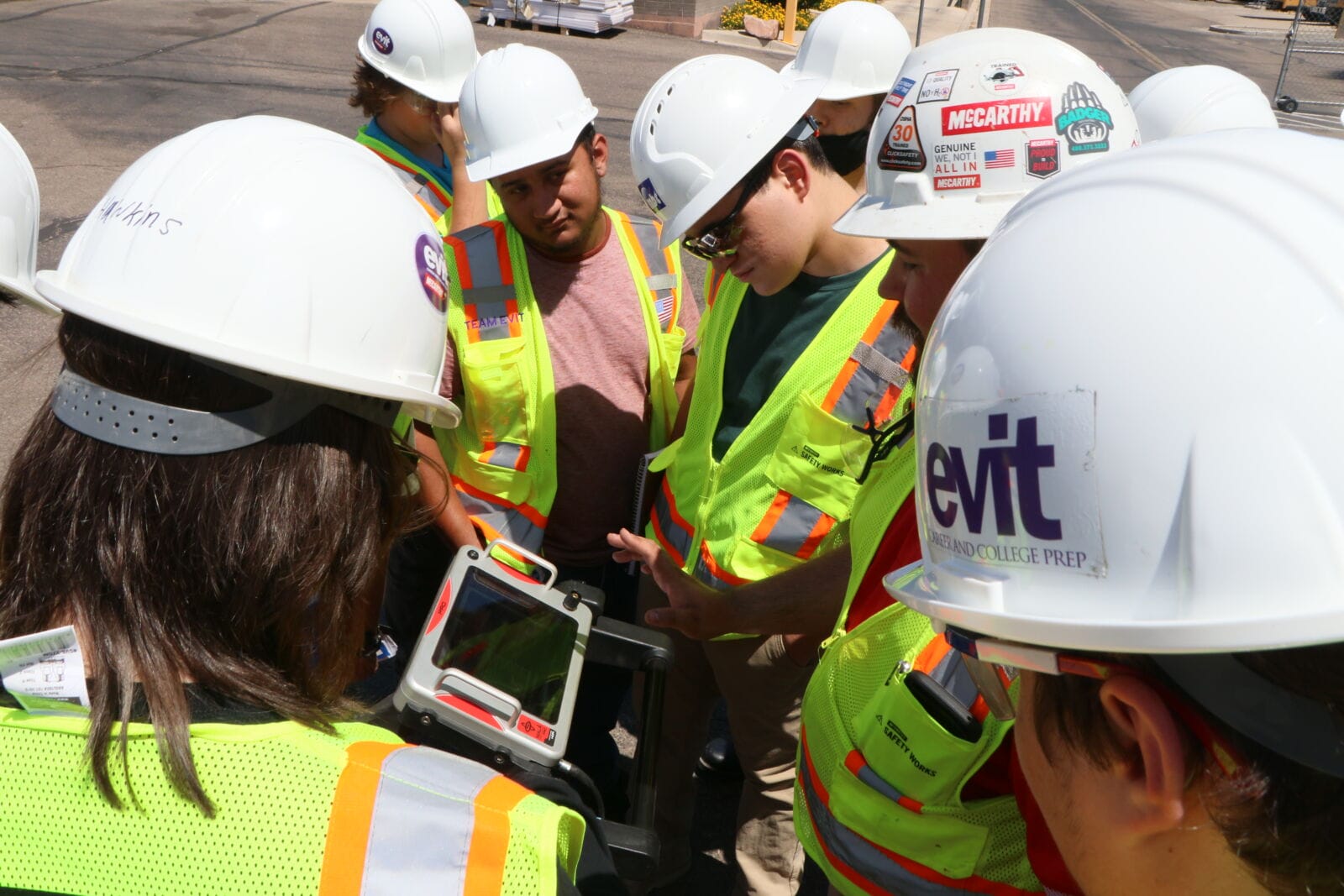In 1990, the Arizona State Legislature established what are now called career and technical education districts (CTEDs) to provide high school students the opportunity to earn certifications in programs from automotive mechanics to welding. In the decades since, the number of CTEDs has grown from one — the East Valley Institute of Technology (EVIT) — to 15 across the state. These districts, along with career and technical education (CTE) available in many community colleges, provide valuable training for in-demand fields such as construction.
“Oftentimes, students experience a traditional setting in which they’re expected to memorize and regurgitate information, and for many students, that doesn’t inspire them to learn,” says Chad Wilson, superintendent of EVIT. “Through CTE, we find students who have an interest in construction but may not have seen themselves as mathematicians quickly realize they’re very capable in math because there’s a ton of algebra and geometry in the industrial trades. CTE is an avenue for students to learn through hands-on experience rooted in application.”
Having the opportunity to get high school students on a path for a construction career offers them a significant advantage in the industry, according to Charlie Ellis, general construction technology instructor at West-MEC.
“If a student takes a construction program, with the physical strength and intellectual capacity to learn a new subject of a high schooler, they have a great launch for a career,” he says. “They can start fast and early, as opposed to delaying things and rolling into the industry when they’re 30. If you start at that age, your contemporaries have a 12-year head start and they’ll be your boss.”
LEARN MORE: Arizona construction: Here’s how the next normal looks
Still, not every 16-year-old has the foresight to know they want a job in the trades, which is why CTEDs such as EVIT and West-MEC offer programs for adult learners. Community colleges, such as South Mountain Community College (SMCC), also have construction courses that can help jumpstart a career.
“When talking to our industry partners about where we provide value, it’s that we’re training people who are totally green,” explains Travis May, interim dean of academic innovation at SMCC. “They have to get up to speed on safety standards, and sometimes even how to use a tape measure. Our 16-week program teaches them how to read blueprints, do basic measurements and building. We’re like a pre-apprenticeship that gets students ready for the field in one semester.”
UNBEATABLE FUTURE
Sometimes, the hardest people to convince that CTE programs are a worthwhile endeavor for high school students are their parents. Wilson notes that the CTE world has wrestled with this issue for years because there’s a reluctance on behalf of parents to “pigeonhole” their child in a trade when college is seen as a one-size-fits-all route to success. That mindset, he says, can prevent students from having an opportunity that could change their life.
“Because we’re a public high school, a student who comes to EVIT is doing so as part of their high school programming,” Wilson explains. “That means they’re not paying, beyond a little out of pocket cost for some of the materials and certifications. If a student waits until they’re out of high school and then gets a welding certification from [a private sector school], they’ll spend tens of thousands of dollars instead of getting it nearly free.”
Perceptions are changing around the trades, Wilson notes, thanks in part to the pandemic. The EVIT governing board decided to open for in-person learning the first day the school was allowed to do so while others remained remote.
“At the same time, as a nation we saw welders, construction workers, plumbers and HVAC technicians still doing the work needed to keep this country moving,” he continues. “I think people began to realize that the work we do in CTE, especially in the trades, is the work that built the fabric of America. There’s also financial awareness around the industry too that wasn’t there before. As an HVAC technician in Arizona, you can make more money than I do as a school superintendent.”
Wilson recalls speaking with an instructor about two students who recently completed the EVIT welding program and were hired by a Tempe-based fabrication company that operates throughout the country. These young men travel the country, earning well over $100,000 a year, have a per diem and don’t have college debt. That’s not to say that getting trades training in high school hinders students from going on to postsecondary education.
“Students and adults that come to us and earn industry certifications go into the workforce and begin getting experience on the job. But many realize they need a bit more education to step into a higher position in the industry and go back to school,” Wilson continues. “It isn’t CTE or college, it can be CTE and college.”
At SMCC, May says there are two programs to help high school students earn college credits as they learn a trade. One is a dual enrollment opportunity for Academies at South Mountain students where they can earn five and a half college credits without having to step foot on SMCC’s campus. The other is known as the Achieving a College Education (ACE) program.
“For the ACE program, we take juniors and put them through our 16-week class, but we stretch it out over the whole year because they’re in high school,” he explains. “In the fall and spring semesters, they come to campus on Saturdays, and then they do five weeks with us in the summertime. During their senior year, they take our electrical course. By the time they graduate, they’ll have the carpentry and electrical certification, along with college credit.”
The support of the private sector is crucial for this sort of education to be successful, Wilson adds. Many CTE teachers are retired professionals in their field who want to give back, and advisory councils with company representatives ensure that the curriculum is relevant and up to date.
“Our industry partners will do site visits and come into the classroom to do demonstrations,” he concludes. “Having our students get exposed to the real work those companies are doing not only allows them to get a deeper understanding of the trade but also builds relationships with those companies for job opportunities once they complete the program.”




